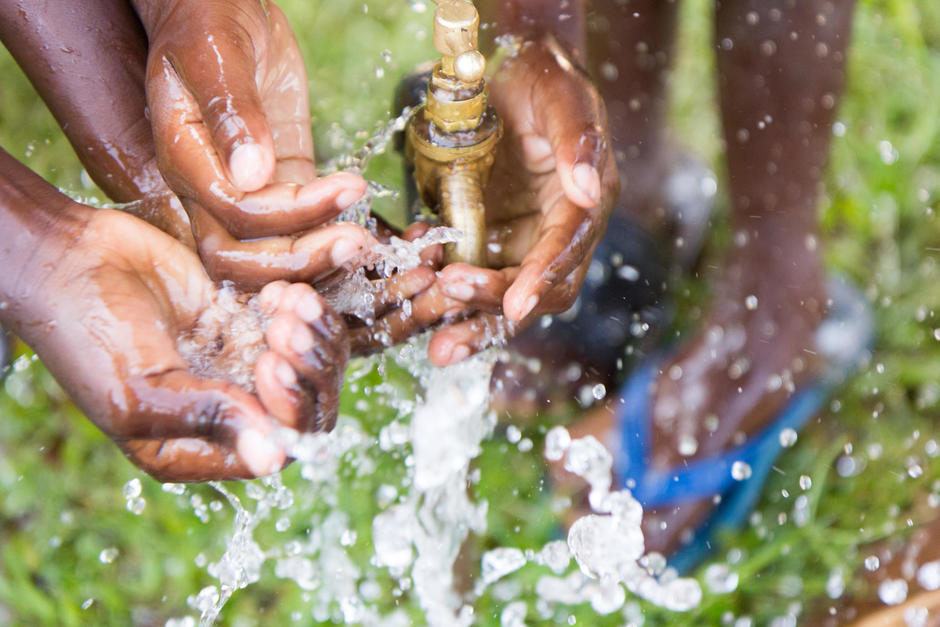In the Democratic Republic of Congo (DRC), a study shows that the exacerbation of conflict and the number of internally displaced people in endemic areas are increasing the risk of cholera spreading.
Cholera is considered endemic in the eastern part of the Democratic Republic of the Congo (DRC), specifically in the Great Lakes Region. Cholera outbreaks have also sporadically spread from these endemic areas to other vulnerable areas in the country, although the drivers of this dynamic remain unclear. In a recent study, Kayembe et al. sought to better understand the underlying factors and mechanisms of cholera spread outside of endemic areas from 2000 to 2018 (1).
Cholera outbreaks are influenced by various risk factors such as limited access to safe drinking water and sanitation infrastructure as well as poor hygiene practices, which renders the population vulnerable to disease transmission (2). Secondary factors such as conflict and population displacement can exacerbate outbreaks, impede access to healthcare facilities and hinder response efforts (3). In this study, the researchers analyzed data on suspected cholera cases as well as several variables including types of conflicts, the number of internally displaced persons (IDPs), population density and other key indicators (1).

From 2000 to 2018, a total of 455,333 suspected cholera cases were reported in the DRC, of which 51.2% were recorded in two provinces: 23.3% in North Kivu and 27.9% in South Kivu. The health zones bordering Lake Kivu accounted for 44% of all suspected cholera cases reported in the Kivu provinces. During the study period, 11,980 conflict events were reported in the country, of which the majority included battles (44.5%) followed by violence against civilians (34.0%). Excluding riots and protests, over 50% of the conflicts were concentrated in the two Kivu provinces. From 2009 to 2018, over 5.7 million IDPs were reported in the DRC, with a significant increase since 2015. North Kivu and South Kivu accounted for 45% of all forced population displacement in the country (1).
The study revealed that an increased risk of cholera spreading outside the endemic provinces in the eastern DRC was associated with (1) an increase in suspected cholera cases in endemic areas, (2) exacerbation of conflicts, and (3) the number of IDPs in endemic provinces (1). Indeed, during conflicts, the risk of potable water shortages, limited access to sanitation facilities and poor hygiene practices in IDP camps and host communities can increase tenfold (4).
These findings highlight the impact of conflict on forced migration and the dynamics of cholera outbreaks in endemic areas bordering Lake Kivu as well as the subsequent spread of major cholera outbreaks to other areas in the non-endemic eastern and western provinces. Conflict monitoring should be included in the early warning, alert and response system of integrated cholera surveillance to help anticipate the risk of outbreak expansion in the DRC (1).
References
Kayembe HC, Bompangue D, Linard C, Mandja BA, Batumbo D, Matunga M, et al. Drivers of the dynamics of the spread of cholera in the Democratic Republic of the Congo, 2000–2018: An eco-epidemiological study. PLoS Negl Trop Dis. 2023 Aug 28;17(8):e0011597.
Lippi D, Gotuzzo E, Caini S. Cholera. Microbiol Spectr. 2016 Aug;4(4).
Charnley GEC, Jean K, Kelman I, Gaythorpe KAM, Murray KA. Association between Conflict and Cholera in Nigeria and the Democratic Republic of the Congo. Emerg Infect Dis. 2022 Dec;28(12):2472–81.
Als D, Meteke S, Stefopulos M, Gaffey MF, Kamali M, Munyuzangabo M, et al. Delivering water, sanitation and hygiene interventions to women and children in conflict settings: a systematic review. BMJ Global Health. 2020 Jul 1;5(Suppl 1):e002064.
